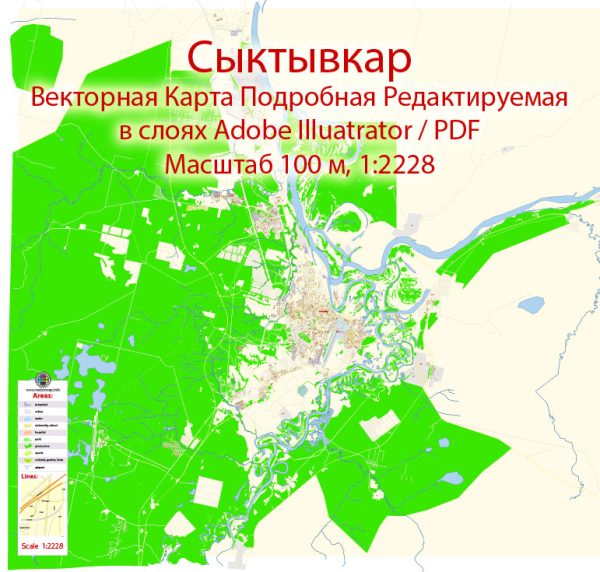Syktyvkar is the capital city of the Komi Republic in Russia. Its history of urban development is closely tied to the broader historical and cultural context of the region. Here is an overview of Syktyvkar’s history:
- Early Settlements (16th-17th centuries): The area around present-day Syktyvkar was inhabited by indigenous Finno-Ugric peoples for centuries. Russian explorers and settlers gradually moved into the region during the 16th and 17th centuries, establishing trade routes and small settlements.
- Foundation and Growth (18th century): The city’s history as a significant urban center began in the 18th century when a military outpost was established on the Sysola River. The fort was founded in 1780, and it played a strategic role in the Russian Empire’s efforts to secure and develop the vast territories of the North.
- Industrialization (19th century): The 19th century brought significant changes to Syktyvkar as the city became a center for the timber industry. The exploitation of the rich forests in the surrounding area contributed to the economic development of the region. The city’s population grew, and infrastructure, such as roads and railways, was developed to facilitate trade.
- Soviet Era (20th century): The Soviet period marked a new phase in Syktyvkar’s development. The city continued to grow as industrialization expanded, with a focus on timber processing, paper production, and other manufacturing activities. The Komi Autonomous Soviet Socialist Republic was established in 1936, and Syktyvkar became its capital.
- Post-Soviet Period (1991-present): With the dissolution of the Soviet Union in 1991, Syktyvkar, along with the Komi Republic, became part of the Russian Federation. The transition to a market economy brought challenges, but the city has adapted, and efforts have been made to diversify the economy.
- Modern Development: In recent years, Syktyvkar has seen efforts to modernize its infrastructure and develop its cultural and educational institutions. The city has universities, museums, and theaters that contribute to its cultural and intellectual life. Additionally, urban planning projects have aimed to enhance the quality of life for residents.
Syktyvkar’s history reflects the broader patterns of Russian and regional development, with shifts in economic focus, political changes, and the challenges and opportunities that come with them. The city continues to evolve, balancing its industrial heritage with a growing emphasis on education, culture, and modernization.


 Author: Kirill Shrayber, Ph.D.
Author: Kirill Shrayber, Ph.D.